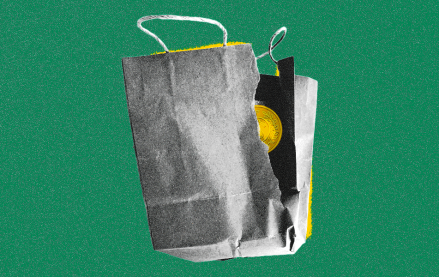Why out-of-home is the next frontier for proven attribution

Why out-of-home is the next frontier for proven attribution
At the Digiday Media Buying Summit, Jon Schulz, CMO of Viant, said “if it cannot be measured, it will not be bought.”
The media landscape is becoming more and more homogenous. What used to separate TV from mobile and digital out-of-home from social is quickly eroding. However, the mediums themselves haven’t really changed: Instead, media owners of all types are adapting and improving their capabilities, disrupting the expectations of media buyers in the process.
Take television, for example. With the help of first-party data from streaming services and traditional TV providers, advertisers can now turn to TV to target specific consumers. And while digital out-of-home, or DOOH, was once marred by its measurement inadequacies, DOOH agencies are now embracing location intelligence technology to accurately measure the success of campaigns. What were once advantages exclusive to internet-based advertising, sophisticated targeting and measurement resources have almost become standard for the other media types.
TV advertising has long flirted with the concept of audience targeting. Its evolution into a more precise and dynamic offering for advertisers has been somewhat of a slow burn. Conversely, DOOH’s adoption of measurement tools has been more like an abrupt explosion. The proliferation of available marketing data in recent years has empowered DOOH companies to shore up its previous shortcomings. In 2019, digital out-of-home media can not only analyze overall campaign impact, but also prove attribution.
With the help of location intelligence and analytics platforms, DOOH can properly define the value of ads that live offline. And because out-of-home media reaches a primed audience that is already on the go, it should be of no surprise that DOOH advertising revenue has steadily increased the past 24 months. In fact, OOH saw its biggest growth in over a decade in the second quarter of 2019, suggesting that media buyers are becoming more and more aware of DOOH’s new capabilities.
Gone are the days when consumer engagement with DOOH ads was immeasurable. Today, DOOH can nearly match internet-based advertising when it comes to attribution — and DOOH companies can utilize multiple attribution methodologies by partnering with various intelligence sources, such as Ubimo, Pathformance and IRI, to measure foot traffic and sales lift
By geo-fencing the locations where a campaign is running, as well as the target retail locations, and tracking the exposed consumers, companies like Ubimo and Ninth Decimal can compare foot traffic before, during and after the campaign, and attribute any lift in store visits. Zoom Media partnered with Ubimo to do this for a well-known grocery store chain, enabling the grocer to attribute a 13 percent lift in store visits to its in-gym media campaign.
Proving sales lift is also possible by partnering with companies like Pathformance and IRI to analyze consumer spending and real-time data of store-level inventory movement. For one personal care brand, Zoom Media was able to attribute a return on advertising spend of $2.18.
In a world where daily experiences are cleanly delineated between online and off, it seems life is getting a whole lot easier for media buyers.
More from Digiday

How CTV and DOOH are growing this political season for smaller agencies
Connected TV and digital out-of-home are playing a bigger role in upcoming elections and politics – especially for smaller agencies looking to place clients’ dollars.

CVS Media Exchange bets on solving the measurement gap to stand out in the retail media landscape
Measurement and attribution are common pain points for advertisers looking to track campaign performance in retail media. They’re pain points that CVS Media Exchange, CVS’s retail media arm, which is also known as CMX, is aiming to solve to help it stand out in an increasingly crowded landscape.

After years of caution, pharma advertisers are embracing influencer marketing
Pharma clients used to be wary of the creator economy. Why are they now throwing caution to the wind?





